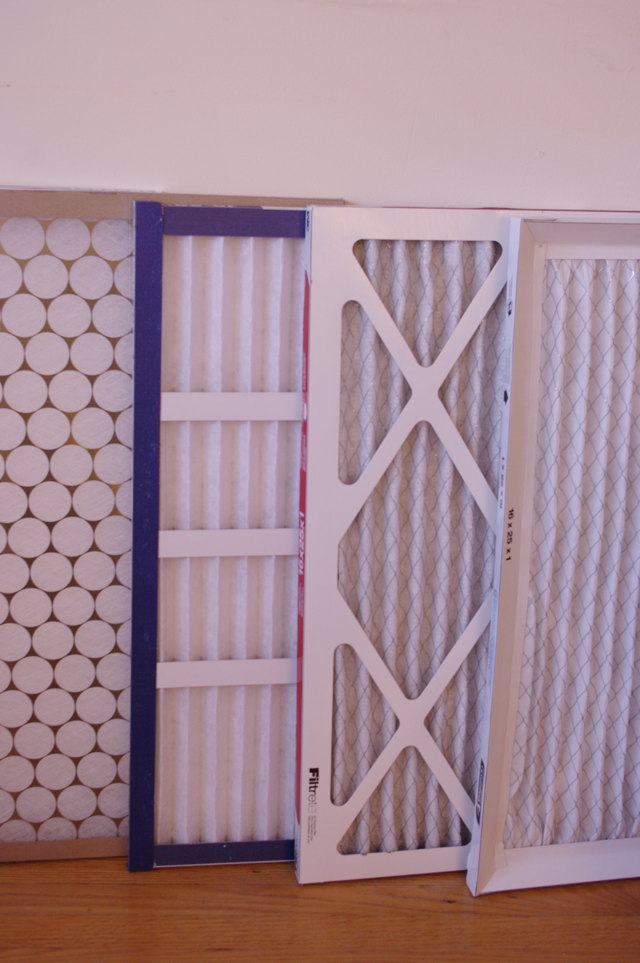Conclusion and final thoughts
It is quite amazing, that a simple decision about choosing a furnace filter can take seconds to make, but it is really a type of purchase that requires quite a bit of thought that cannot be conducted in aisle 4 of your local building centre. Before making an educated guess on which filter is best for you, weigh the importance of Long term furnace motor health, Airflow, Filtering, Indoor air quality, and Environmental impacts by using the provided chart. I guarantee you that your needs will not be the same as your neighbour, or the person in the closest city.
Just a few bits of extra information: Dirty filters are more efficient at filtering than clean ones, as they can trap smaller particles, until airflow is reduced by too much, and that is why you have to replace them every three months. It is not uncommon for filters to be very dirty in a much shorter time, it just depends on your environment. Electrostatic filters can arguably increase effectiveness of the filter, but not the MERV rating. It does not make sense that the MERV value should increased with electrostatics because the MERV scale has only to do with density which is about the ability to prevent particles of certain sizes from passing through a barrier and nothing about the ability trap more particles through electrostatics. Personally, I think anything higher than a MERV 12 for homes is overkill if indoor air quality is important for you unless your doctor says so. Do you need a duct cleaning service, ever? NO!. It surprisingly does not have a large an impact on the system as you may think. The particles that are trapped in the ducts are trapped. Remember that new particles from the outside comes through all the time. A total waste of money.
What filter is in my HVAC system?
There is one bedroom in my house that is always a little too hot during the summer, and I don’t want that room to be even hotter than it is currently. I suspect that a duct was disconnected inside the floor in an inaccessible spot before I lived in the house (i can feel a cold spot). The goal here is trying to maximize airflow, so I am using the supported MERV ~4 fibreglass filter I got from the local HVAC supply store. This of course is slightly lower than ASHRAE’s minimum recommended filter MERV 6 for the summer season. During the other three seasons of the year when airflow is not as critical, I use a MERV 8 filter because I think that is the most environmentally friendly and economical choice in the long run.
- If you are very highly concerned about allergens, and you want excellent filtration, consult your local HVAC repairman for a consultation to perform a static pressure drop test. He can determine if your current furnace configuration can handle very high MERV value filters, or suggest other options to modify your current system.
- Higher MERV values does not always equal better overall HVAC system performance and can be a detriment to the system. It can unintentionally overwork furnace system components leading to premature failure.
- MERV values are exaggerated by some manufacturers by claiming their electrostatic properties help to filter. Remember the MERV scale has nothing to do with electrostatics.
- If you are not susceptible to allergens, most HVAC systems can handle MERV 6 filter for the summer (according to ASHRAE) and a MERV 8 for the rest of the year.
- Washable filters are not necessarily more environmentally friendly than throwaways. Carbon reduction is not the only form of measurement of how environmentally friendly a product or process is. Though this can change in the future with better filtering product technologies. They reduce life cycle of system components. They also cause the HVAC system to work harder burning more carbon and wasting electricity by forcing the fan to work harder by significant margins. When thinking environmentally is it more important to you to reduce landfill waste or reduce consumption of carbon? There is always a trade-off.
- The condition/quality of your duct work plays a large factor in knowing what type of filters you can use.
- Never buy an unsupported fibreglass filter as it can be sucked into the blower.
- Replace filters at 3 month intervals on average. Your results may vary.
- Indoor air quality requirements for people is not the same as manufacture requirements for your furnace to function to specifications. Either one can be more stringent.
- HVAC professionals cannot agree whether fibreglass filters are healthy for an HVAC system. My personal experience has shown me that most, but not all of those professionals who think fibreglass is bad for the system fail to separate the requirements of indoor air quality for people and furnace component requirements so they don’t break down. I personally think it is okay to use it in at least one of four seasons if not more.


